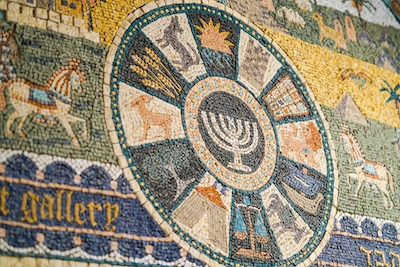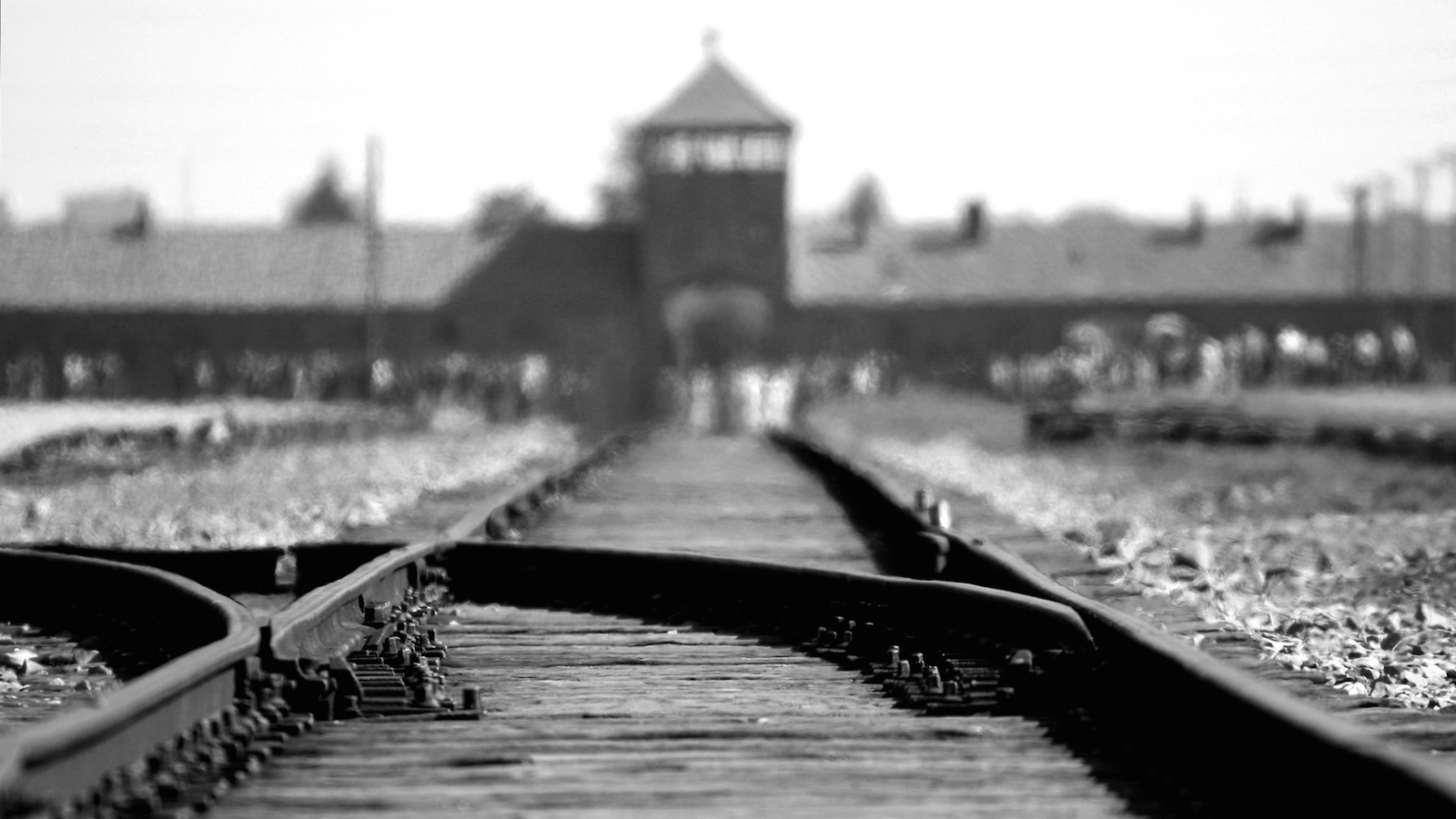Auschwitz-Birkenau was the largest Nazi extermination and concentration camp, located in the Polish town of Oswiecim, 37 miles west of Cracow. One sixth of all Jews murdered by the Nazis were gassed at Auschwitz. In April 1940 SS chief Heinrich Himmler ordered the establishment of a new concentration camp in Oswiecim, a town located within the portion of Poland that was annexed to Germany at the beginning of World War II. The first Polish political prisoners arrived in Auschwitz in June 1940, and by March 1941 there were 10,900 prisoners, the majority of whom were Polish. Auschwitz soon became known as the most brutal of the Nazi concentration camps.
Building a Murder Complex
In March 1941 Himmler ordered a second, much larger section of the camp to be built right near the original camp. This site was to be used as an extermination camp and was named Birkenau, or Auschwitz II.
Eventually, Birkenau held the majority of prisoners in the Auschwitz complex, including Jews, Poles, Germans, and Gypsies. Furthermore, it maintained the most degrading and inhumane conditions–inclusive of the complex’s gas chambers and crematoria. A third section, Auschwitz III, was constructed in nearby Monowitz, and consisted of a forced labor camp called Buna-Monowitz.
READ: How Hitler Laid the Groundwork for Genocide

Help us keep Jewish knowledge accessible to millions of people around the world.
Your donation to My Jewish Learning fuels endless journeys of Jewish discovery. With your help, My Jewish Learning can continue to provide nonstop opportunities for learning, connection and growth.
This complex incorporated 45 forced labor sub-camps. The name Buna was based on the Buna synthetic rubber factory on site, owned by I.G. Farben, Germany’s largest chemical company. Most workers at this and other German-owned factories were Jewish inmates. The labor would push inmates to the point of total exhaustion, at which time new laborers replaced them.
Auschwitz was first run by camp commandant Rudolf Höss, and was guarded by a cruel regiment of the SS Death Head Units. The staff was assisted by several privileged prisoners who were given better food, conditions, and opportunity to survive, if they agreed to enforce the brutal order of the camp.
Auschwitz I and II were surrounded by electrically charged four-meter high barbed wire fences, guarded by SS men armed with machine guns and rifles. The two camps were further closed in by a series of guard posts located two thirds of a mile beyond the fences.
In March 1942, trains carrying Jews commenced arriving daily. In many instances, several trains would arrive on the same day, each carrying one thousand or more victims coming from the ghettos of Eastern Europe, as well as from Western and Southern European countries.
Throughout 1942, transports arrived from Poland, Slovakia, the Netherlands, Belgium, Yugoslavia, and Theresienstadt. Jews, as well as Gypsies, continued to arrive throughout 1943. Hungarian Jews were brought to Auschwitz in 1944, alongside Jews from the remaining Polish ghettos, yet to be liquidated.
No Longer Individuals, But Numbers

By August 1944 there were 105,168 prisoners in Auschwitz whilst another 50,000 Jewish prisoners lived in Auschwitz’s satellite camps. The camp’s population grew constantly, despite the high mortality rate caused by exterminations, starvation, hard labor, and contagious diseases. Upon arrival at the platform in Birkenau, Jews were thrown out of their train cars without their belongings and forced to form two lines, men and women separately.
SS officers, including the infamous Dr. Josef Mengele, would conduct selections among these lines, sending most victims to one side and thus condemning them to death in the gas chambers. A minority was sent to the other side, destined for forced labor. Those who were sent to their deaths were killed that same day and their corpses were burnt in the crematoria. Those not sent to the gas chambers were taken to “quarantine,” where their hair was shaved, striped prison uniforms distributed, and registration took place. Prisoners’ individual registration numbers were tattooed onto their left arm.
Most prisoners were then sent to perform forced labor in Auschwitz I, III, sub-camps, or other concentration camps, where their life expectancy was usually only a few months. Prisoners who stayed in quarantine had a life expectancy of a few weeks.
The prisoners’ camp routine consisted of many duties. The daily schedule included waking at dawn, straightening one’s sleep area, morning roll call, the trip to work, long hours of hard labor, standing in line for a pitiful meal, the return to camp, block inspection, and evening roll call. During roll call, prisoners were made to stand completely motionless and quiet for hours, in extremely thin clothing, irrespective of the weather. Whoever fell or even stumbled was killed. Prisoners had to focus all their energy merely on surviving the day’s tortures.
Survival and Resistance
The gas chambers in the Auschwitz complex constituted the largest and most efficient extermination method employed by the Nazis. Four chambers were in use at Birkenau, each with the potential to kill 6,000 people daily. They were built to look like shower rooms in order to confuse the victims. New arrivals at Birkenau were told that they were being sent to work, but first needed to shower and be disinfected. They would be led into the shower-like chambers, where they were quickly gassed to death with the highly poisonous Zyklon B gas.
Some prisoners at Auschwitz, including twins and dwarfs, were used as the subjects of torturous medical experiments. They were tested for endurance under terrible conditions such as extreme heat and cold, or were sterilized.
Despite the horrible conditions, prisoners in Auschwitz managed to resist the Nazis, including some instances of escape and armed resistance. In October 1944, members of the Sonderkommando, who worked in the crematoria, succeeded in killing several SS men and destroying one gas chamber. All of the rebels died, leaving behind diaries that provided authentic documentation of the atrocities committed at Auschwitz.
By January 1945 Soviet troops were advancing towards Auschwitz. In desperation to withdraw, the Nazis sent most of the 58,000 remaining prisoners on a death march to Germany, and most prisoners were killed en route. When the Soviet army liberated Auschwitz on January 27, soldiers found only 7,650 barely living prisoners throughout the entire camp complex. In all, approximately one million Jews had been murdered there.
Reprinted with permission from Encyclopedia of the Holocaust (Yad Vashem).



